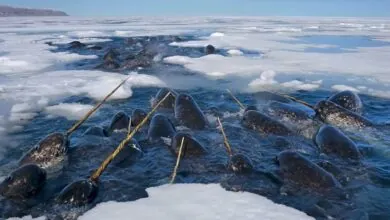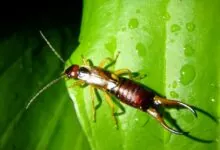Don’t Get Hooked! The Truth about Northern Pike Teeth
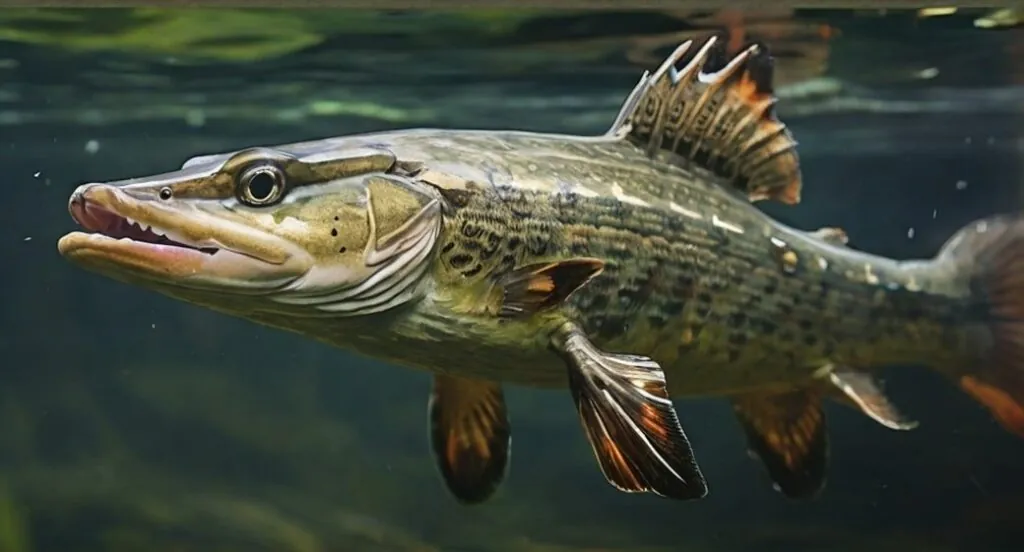
Have you ever gazed a fish with a toothy grin that could rival a horror movie? Then you’ve likely encountered the northern pike – a freshwater predator renowned for its teeth. Over and above the northern pike teeth, these ferocious fish are striking creatures – from their lightning-fast attacks to their unparalleled adaptations for hunting. Buckle up my curious friends and get ready to dig deep into the world of the northern pike.
| Kingdom | Phylum | Class | Order | Genus | Family | Scientific Name |
| Animalia | Chordata | Actinopterygii | Esociformes | Esox | Esocidae | Esox lucius |
Scientific Name
The northern pike scientifically, recognized as Esox lucius, is a species of carnivorous fish of the genus Esox (pikes). They’re typically found in moderately salty and fresh waters of the Northern Hemisphere. There are known simply as a pike (PL: pike) in Great Britain, Ireland, most of Eastern Europe, Canada and the United States, although in the Midwest, they may be called northern.
Northern Pike Teeth
Northern pike teeth aren’t just cosmetic features; they’re acutely specialized tools that define the fish’s entire life. These teeth play a pivotal role in predation, feeding and defense. Let’s explore the hidden gems!
Northern Pike Teeth Anatomy
Northern pike possess three distinct types of teeth, each strategically positioned and serving a particular purpose.
Structural Adaptations
The structure of northern pike teeth is essential for their predatory success.
Size and Shape: Dentary teeth can grow up to an inch long, with a pointed, conical shape ideal for puncture. Palatine and vomerine teeth are smaller and sharper, facilitating tearing and gripping.
Arrangement in the Jaw: The northern pike teeth are positioned in multiple rows, creating a formidable barrier within the mouth and minimizing escape chances for prey.
Texture and Composition: The pike teeth are amazingly hard and durable, composed of dentine and covered with a layer of enamel, letting them withstand the rigors of catching and consuming prey.
Northern Pike Teeth Functionality
Northern pike’s predatory behavior includes two primary strategies:
Northern Pike Teeth and Human Interactions
What makes the northern pike a prized sport fish is its impressive size and fighting spirit. Nonetheless, their formidable teeth pose exclusive challenges for anglers.
Tackle and Gear Considerations
Owing to the sharp teeth, heavier braided line (30-50 lbs test) are recommended to resist abrasion during strikes and battles. In addition, a wire leader is crucial to prevent line cuts.
Choose lures and hooks with strong construction and robust points to withstand potential bites and avoid bending or breaking. Long-nosed pliers are pivotal for handling captured pike safely and removing hooks lodged deep in their mouths. For comprehensive information about Northern Pike, including their habitat, behavior, and fishing techniques, you can visit the In-Fisherman.
Handling Techniques
These creatures are powerful and their teeth can inflict serious injuries. You’re always to wet your hands before handling to improve grips and avoid damaging the fish’s protective slime coat. Employ a net or grippers specifically designed for large fish to safely handle and transport the pike fish.
Avoid lifting the fish by the gills or jaw, as this can cause internal damage. If the fish is to be released, gently revive it in the water by holding it upright and letting it regain its balance before releasing it back into the water. Nicknamed “living torpedoes” for their elongated, muscular bodies, they’re prized by anglers for their speed and fight Fish & Wildlife Service.
Origin and Evolution
Evolutionary History
Speaking of the pike origin, fossil evidence suggests they belong to a lineage that originated over 100 million years back during the Cretaceous period. They share a common ancestor with other members of the Esocidae family, including muskellunge and pickerel.
Over the span of Pleistocene glaciations, northern pike populations likely faced habitat fragmentations and isolation as glaciers advanced and retreated.
Genetic Composition and Diversity
The northern pike possess 48 chromosomes, with studies unfolding relatively low genetic diversity compared to other freshwater fish. Albeit low overall diversity, subtle genetic difference exist between pike populations across their stretched geographic range. These variations can be associated with adaptations to specific environmental conditions in different regions.
Environmental Adaptations
Concerning the pike fish adaptations, for life in freshwater environments, northern pike have evolved numerous adaptations, including efficient osmoregulation to maintain proper salt balance and specialized gill structures for extracting oxygen form water with lower dissolved oxygen levels compared to oceans.
Distribution
Contemporarily, the northern pike distribution encompasses freshwater habitats across the Northern Hemisphere. Their range stretches North America, Europe and Asia, including countries like Canada, the United States, Russia, Finland and Sweden.
In the annals of time, they may have been even broader, potentially extending further south in North America during cooler periods. Nevertheless, glaciations likely played a role in shaping their current distribution.
Geography
| Continents | North America, Europe, Asia (Siberia) |
| Countries | Canada, USA, Russia, Sweden, Finland |
| Bio-geographical Realms | Nearctic, Palearctic |
| Biome | Freshwater ecosystems (lakes, rivers, reservoirs) |
| Climate Zones | Temperate, Boreal (subarctic) |
Habitat
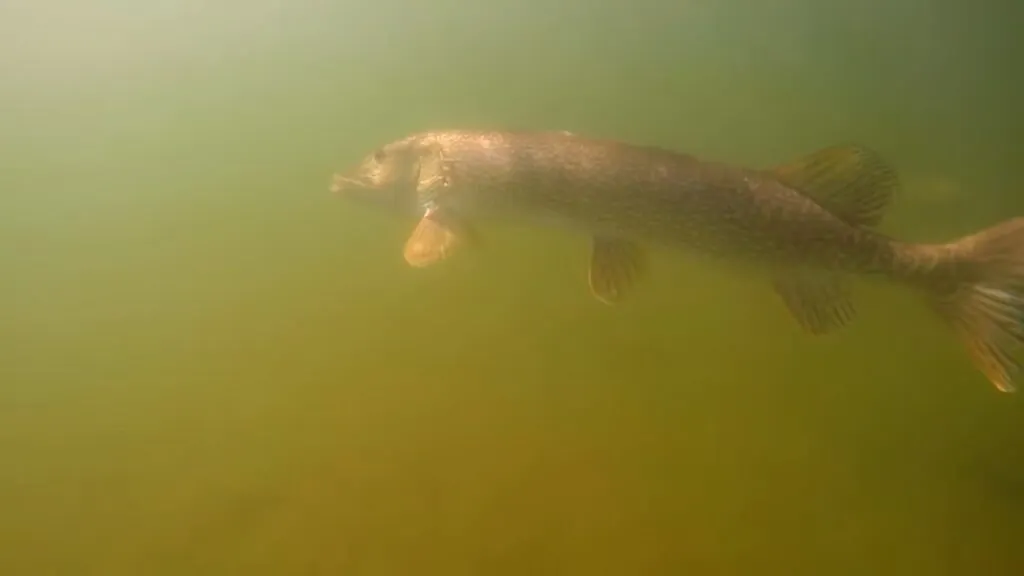
Habitat Preferences
In terms of the northern pike habitat, freshwater habitats like lakes, rivers and associated wetlands are their preferred ecosystems. They generally prioritize shallow, vegetated areas with abundant aquatic plants like reeds, cattails and submerged grasses. These areas offer cover and ambush points and spawning grounds.
Habitat Utilization Patterns
The pike fish feature seasonal movements in response to changes in water temperature and spawning needs. In spring, they move to shallow, warm waters for spawning. In summer, they may move to deeper, cooler areas or seek refuge in submerged vegetation. In fall and winter, they oftentimes return to shallow areas.
5 Northern Pike Facts
Northern Pike World Record
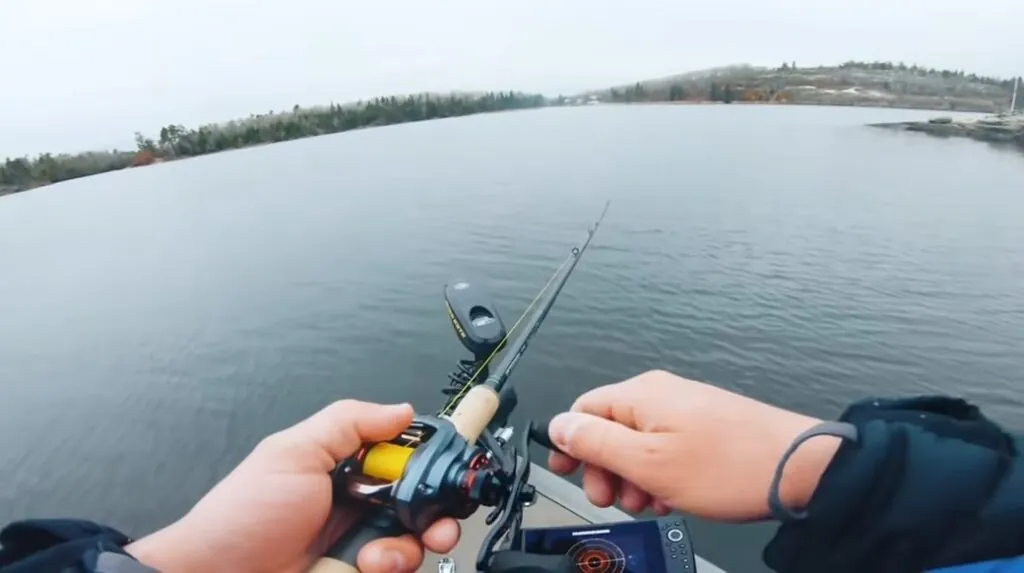
The pike world record is a coveted title in the fishing world. It manifests catching the largest documented specimen of this emblematic freshwater predator. Holding a world record is not solely about bragging rights; it leads to scientific insights of the species.
Historical Context
The first officially recognized northern pike world record was set in 1926 with a fish weighing 46 pounds. Over the decades, the record has been broken a plenty of times. Each new catch pushes the boundaries of what was believed feasible.
Current World Record
The current northern pike world record stands at 51 pounds and 3 ounces. It was caught in Lac La Martre, Canada, in 1949 by a local guide name Kieth Andersen. The record has remained unbroken for over 70 years albeit advancements in fishing gear and techniques. Andersen reportedly kept the fine points of his technique and bait a secret.
Appearance
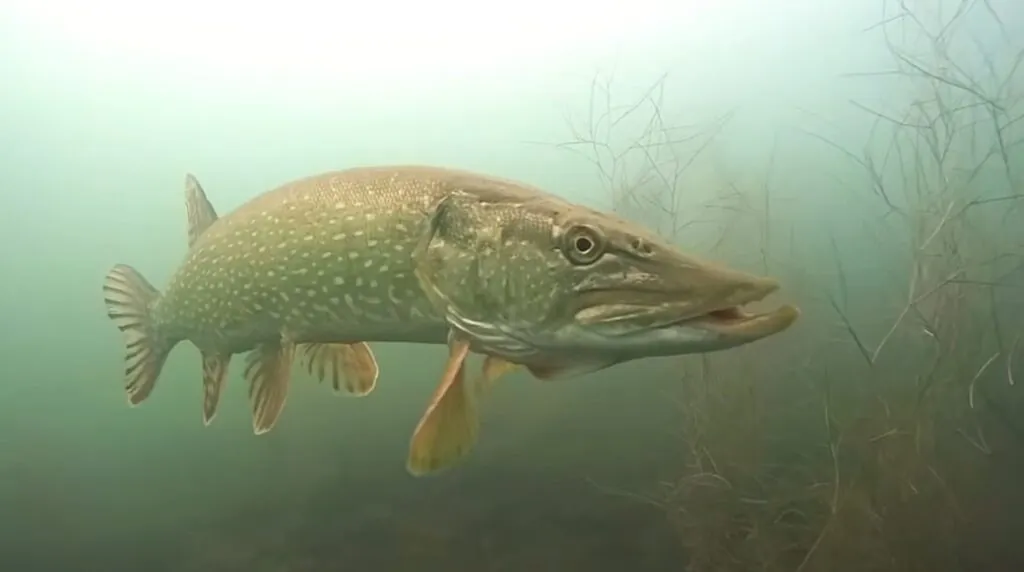
Above and beyond the enchanting the northern pike teeth, the secrets of their appearance beckon further exploration.
Physical Characteristics
Size: Speaking of the northern pike’s size, they’re large, slender with an average length of 36 to 48 inches (91-122 cm). However, they can grow much larger, with exceptional individuals exceeding 5 feet (1.5 meters) in length.
Shape: Their body is elongated and torpedo-shaped and perfect for ambush predation and burst speed.
Color: The pike fish’s color is generally olive green to brown on the back and sides, shading to lighter shades of yellow or white on the belly.
Markings: The dorsal fin is greenish-yellow to brown, oftentimes with irregular dark markings. The pectoral fins and pelvic fins are usually light yellow or cream-colored.
Distinctive Feature: The most awe-inspiring feature of pike fish is their large, elongated snout with a duck-like bill. The snout is home to a formidable set of sharp teeth.
Northern Pike Anatomy
| Color(s) | Olive green, brown, yellow, with lighter sides and a white belly |
| Tongue | Yes, with taste buds |
| Mouth | Large, terminal (located at the front of the head) |
| Jaw | Powerful, hinged |
| Teeth | Sharp, pointed, and numerous, arranged in bands and pointing inwards |
| Nose | Elongated, with nostrils located near the top |
| Skeleton | Bony |
Northern Pike vs Muskie
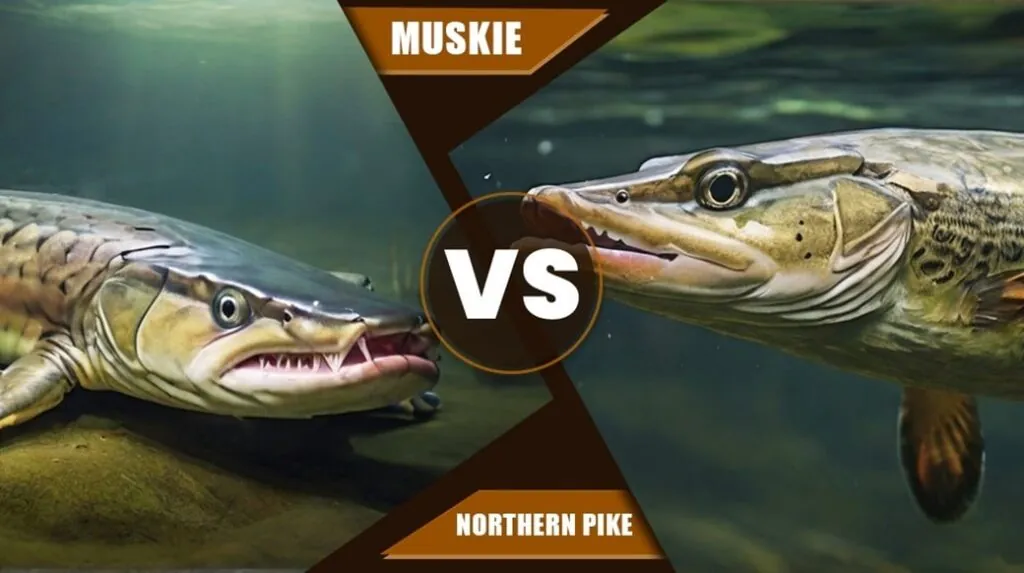
These comparative percentages are ballpark figures for a quick rundown and aren’t scientifically precise. Actual differences can fluctuate thanks to variables like species, environment and individual variations.
Reproduction and Life Cycles
Even as northern pike teeth capture our fascination, their reproduction and life cycles are brimming with equally intriguing tales yet to be told.
Mating System
The northern pike showcase polygamous mating system, that is, one male may mate with multiple females in the course of a breeding season.
Reproductive Biology
With respect to the northern pike breeding season, spawning normally takes place in late winter or early spring when water temperatures reach 4°C to 10°C (39°F to 50°F). Female pike fish invest heavily in reproduction, producing large numbers of eggs (generally between 10,000 and 100,000).
Life Cycle Stages
Mating Habits
| Mating Behavior | Group spawning, with males competing for females |
| Reproduction Season | Early spring (March-April) |
| Litter Size | Large, 15,000 to 75,000 eggs per female |
| Independent Age | Shortly after hatching (within a few weeks) |
Diet and Lifestyle
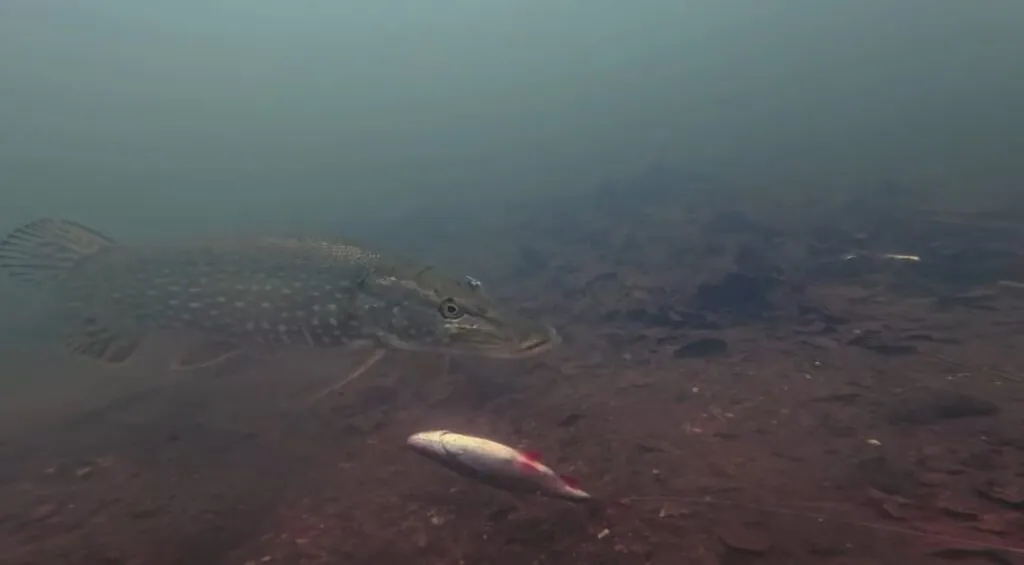
Feeding Ecology
Northern pike are primarily carnivores, implying they’re at the top of the food chain in their ecosystems. Their diet chiefly comprises fish, including minnows, suckers, perch and even smaller pike.
Foraging Strategies
The pike fish utilize their camouflage and powerful burst speed to ambush unsuspecting prey. They’re also opportunistic feeder, actively pinpointing prey and using their sharp teeth and powerful jaws.
Diurnal Activity Patterns
Pike are predominantly diurnal, meaning they’re most active during the day. Notwithstanding, they can also feature crepuscular activity and may become more active night in certain situations, specifically under low-light conditions.
Social Structure
As for as the northern pike’s behavior is concerned, they’re solitary creatures. Adults can exhibit limited territoriality, defending suitable feeding or spawning grounds from other pike.
Threats and Conservation
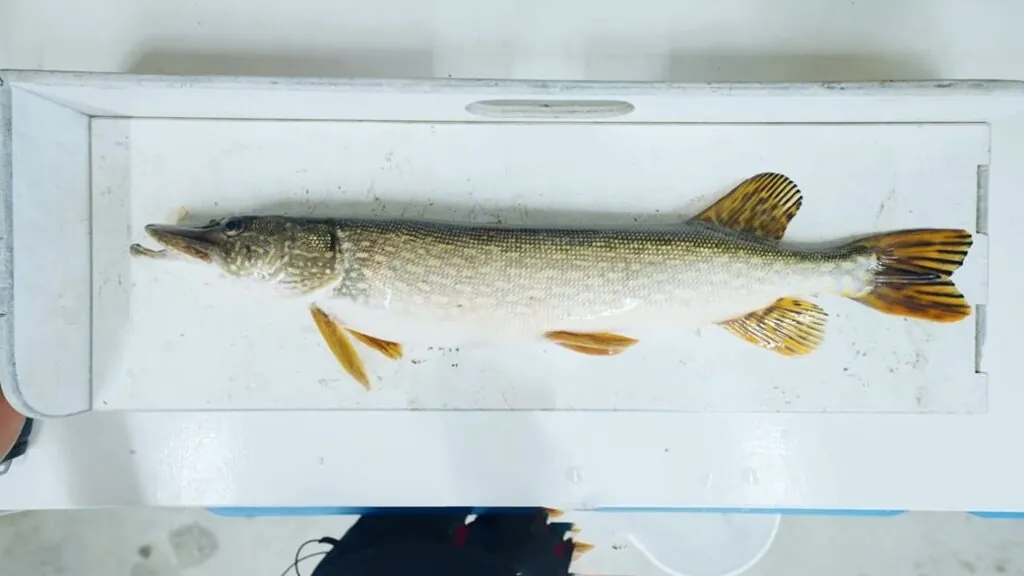
In conjunction with the northern pike conservation status, the International Union for Conservation of Nature (IUCN), it’s categorized as “Least Concern.” Nonetheless, there exit some threats to their population, including habitat loss, overfishing, climate change and introduction of invasive species.
Relationship with Humans
Cultural Significance and Symbolism
The northern pike teeth, size and predatory prowess have earned it a reputation as a fearsome hunter and symbol of strength and dominance across numerous cultures.
In Native American mythology, the Ojibwe people views the pike as a “warrior fish” with its swiftness and ferocity. In European folklore, pike were oftentimes depicted as dangerous and even magical creatures coupled with the underworld and dark waters.
Media and Entertainment
In the realm of media and entertainment, these species have made their conspicuous presence in multiple genres:
Economic Importance
The pike fish are prized sport fish, attracting thousands of anglers each year. A study conducted in Minnesota approximated that pike fishing contributes over $100 million annually to the state’s economy.
Increased tourism correlated with pike fishing activities benefits local economies through increased hotel stays, restaurant visits and other tourism-related spending.
When it comes to the northern pike as a food source, the remote areas like Alaska and parts of northern Canada with confined access to other protein sources, the pike remain a valuable subsistence food source for indigenous communities.
Unique Characteristics
Forge a path through an intriguing journey as we unfold fascinating facts about northern pikes – truly captivating animals that start with N. Join us in shedding light on their remarkable rundown!
| Common Name | Northern Pike |
| Other Name(s) | Jackfish, Pickerel, Great Northern Pike, Pike Fish |
| Number of Species | 1 (Esox lucius) |
| Population Size | Stable |
| Lifespan | Up to 15 years |
| Weight | Up to 25 kg (55 lb) |
| Length | Up to 1.5 meters (5 feet) |
| Top Speed | 40 km/h (25 mph) |
| Predators | Muskellunge, largemouth bass, walleye, humans |
| Prey | Fish, frogs, small mammals, birds |
| Most Distinctive Feature | Sharp, pointed teeth |
FAQs

